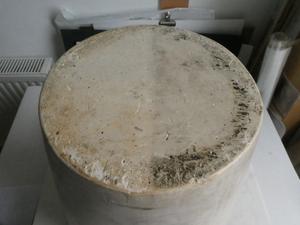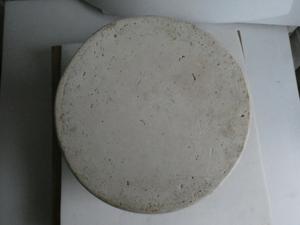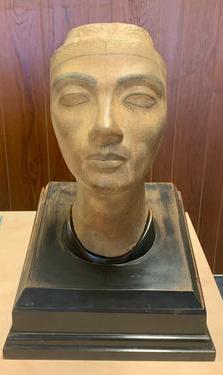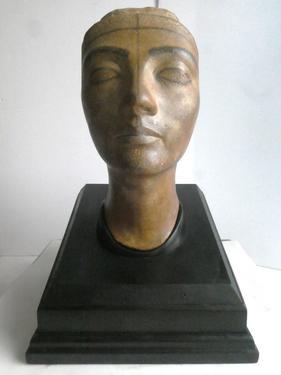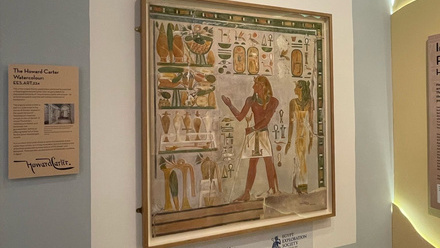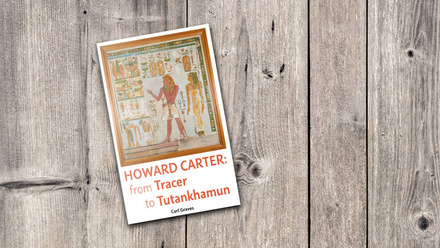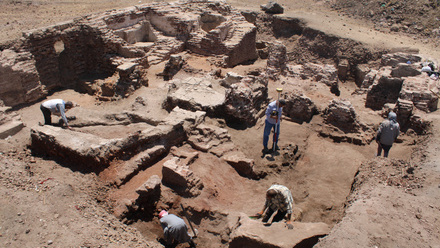Update on Conserving the EES Collections
Thanks to generous donations from supporters during our 2022 Conserving the Collections Appeal we have been busy conserving some of the most precious items in the Society's collections.
Last year we updated you on the conservation of the Society’s largest painting, a watercolour by Howard Carter painted at Deir el-Bahari in 1894 (EES.ART.224). Since then, the painting has been loaned to Swansea University where it is currently on display at the Egypt Centre.
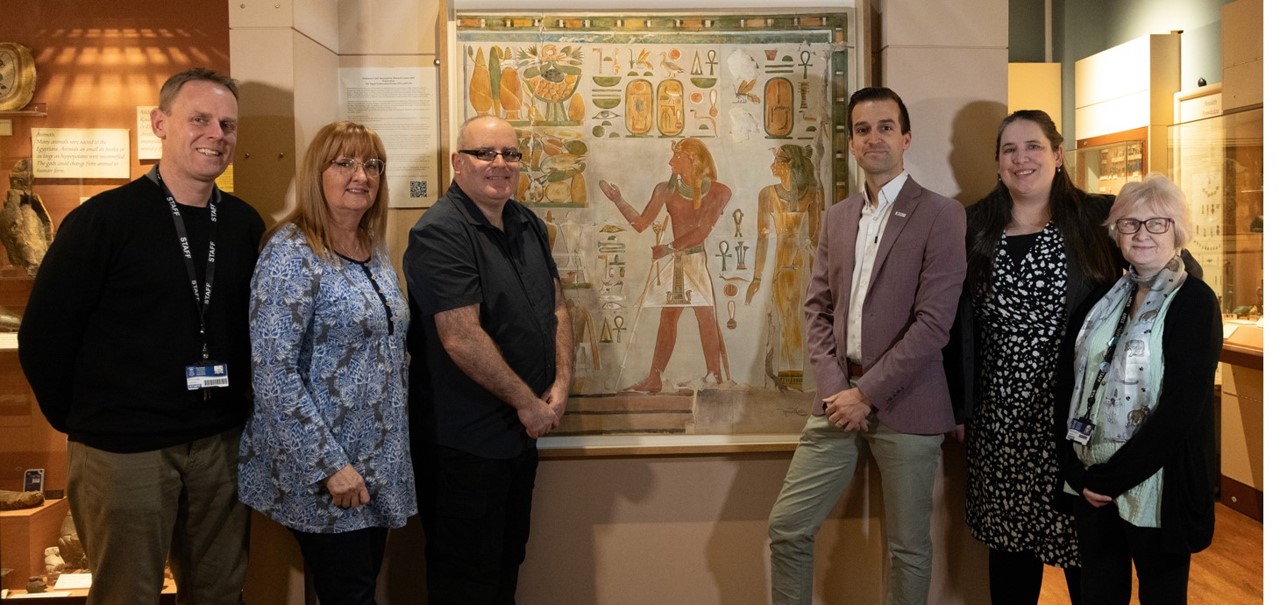
Ken Griffin (Curator, the Egypt Centre) and Carl Graves (Director, the EES) and staff from Swansea University with the watercolour now on display in the Egypt Centre.
Thanks to a generous grant from the Oxford Centre for Byzantine Research, University of Oxford, we were then able to conserve and remount the Society's largest papyrus (P.Oxy.LV 3804-05). This 1500-year-old record of the estate of the Apion family urgently needed to be removed from its Perspex mount, cleaned, and rehoused in new museum-quality framing. Specialist Papyrus Conservator Eve Menei and her colleague Celia Withycombe, carefully cleaned, restored, and reframed this nearly 3-metre-long papyrus to ensure its preservation for many years to come.
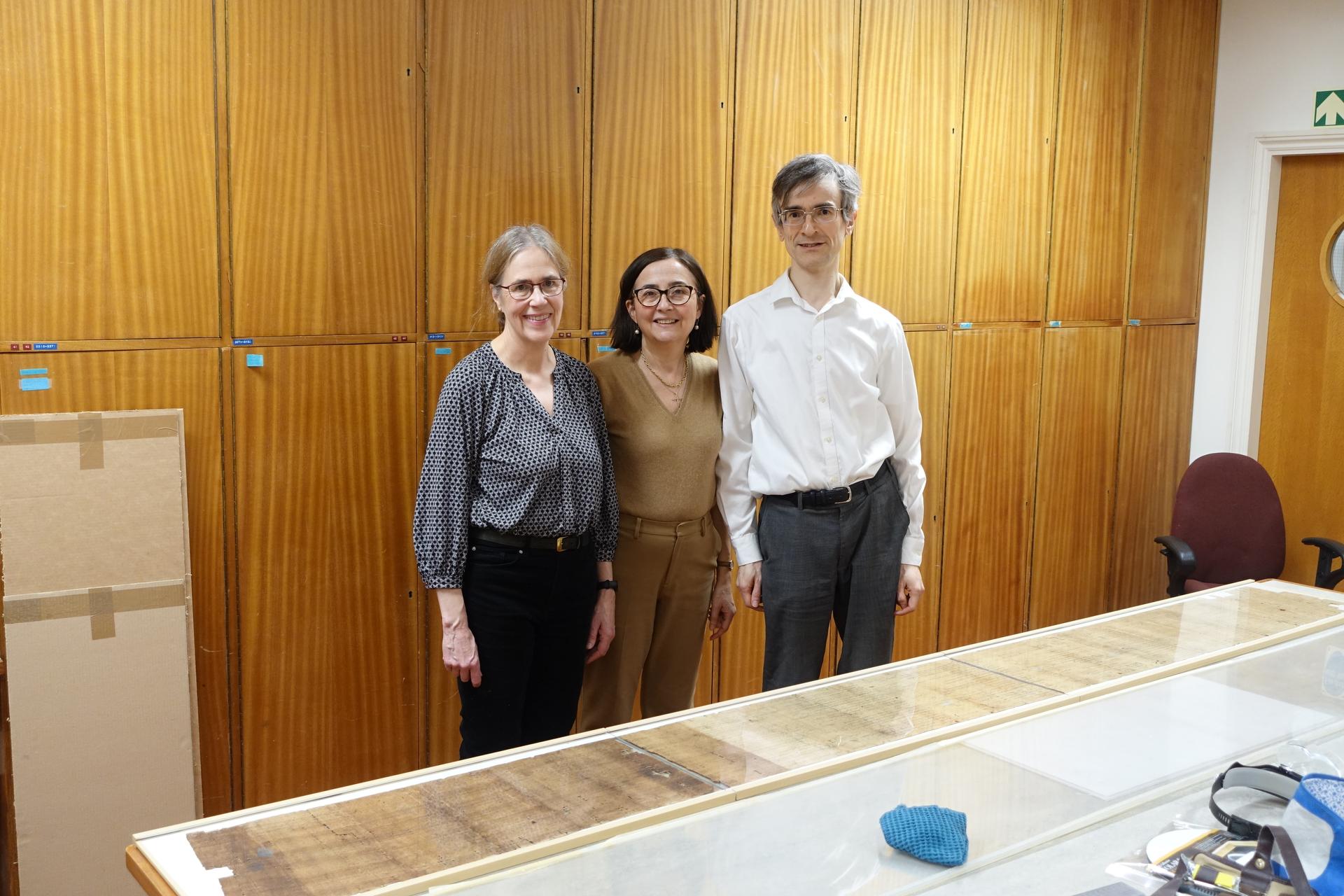
Conservators Eve Menei (centre) and Celia Withycombe (left) with Ben Henry after the conservation and reframing of P.Oxy.LV 3804-3805 (photo: Eve Menei).
During this time, we also sent our portrait of EES founder Amelia B. Edwards for conservation at Simon Gillespie studio. This 120-year-old oil painting, which used to hang in the EES London office, was gently cleaned to remove the hazy 'bloom' on its surface and its original gilded frame was repaired. Museum-quality glazing was installed in the frame to protect the portrait from harmful UV-light and is low-reflective to allow the painting to be more easily viewed. We are very pleased to see the newly restored painting on display in Bolton Museum and Art Gallery where it will be available to see during a multi-year loan period.
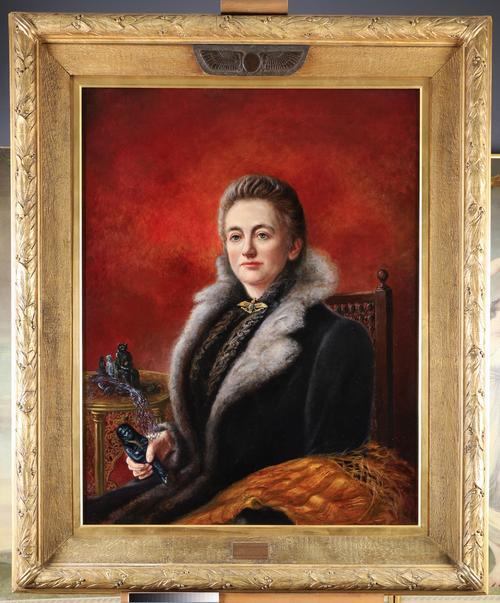
The Society's oil painting of EES founder Amelia B. Edwards after conservation (photo: Simon Gillespie Studios).
Earlier this year, we were even able to send two of our plaster replicas for conservation. These delicate plaster objects are facsimiles of two artefacts excavated by the EES team at Amarna between 1931 and 1933. One is a replica of an alabaster vase that was inscribed with the names of Queen Hatshepsut (an odd find at Amarna!) and the other a replica of the famous unfinished Nefertiti bust. Both of the original objects were retained by the Egyptian Museum in Cairo but project director John D S Pendlebury and his team had these beautiful replicas created in Cairo to bring back for the EES. Conservator Alexandra Kosinova painstakingly cleaned and restored the paint on the plaster, while her colleague repaired the wooden socle in which the bust sits.
The 'Hatshepsut vase' replica base during cleaning (notice already the difference between the left and right sides) and then after completion (photo: Alexandra Kosinova).
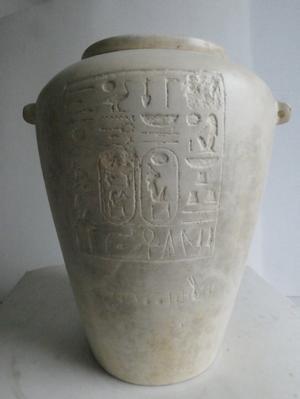
The 'Hatshepsut vase' replica after conservation (photo: Alexandra Kosinova).
The Unfinished Nefertiti bust replica before and after conservation (photos: Stephanie Boonstra and Alexandra Kosinova).
The final main conservation projects from this appeal are to have Alexandra conserve the other two Amarna plaster replicas and, speaking of replicas, to send our Egyptian Revival chair to specialist conservators who will be able to mend the woven leather seat and repair the broken wooden decoration in the chair arm. This ‘President’s Chair’, as we call it in the office, will finally be restored to the standard it was in when it was first made in the early 1900s by Giuseppe Parvis, an Italian-Egyptian master craftsman working in Cairo, who modelled it off of an ancient chair from the 18th Dynasty Tomb of Yuya and Thuya.
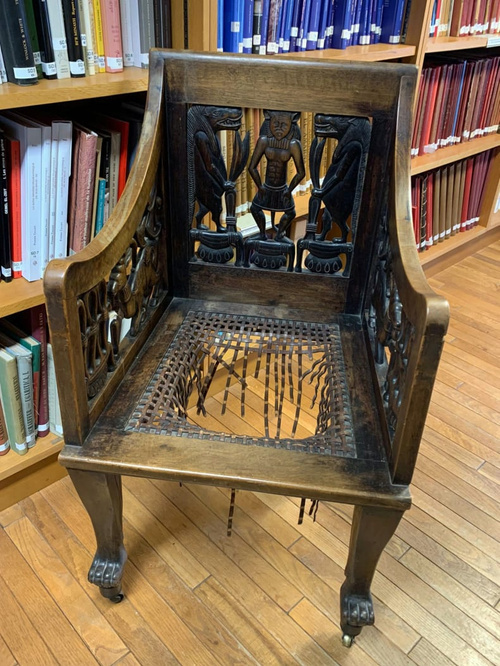
The Society’s Egyptian Revival ‘President’s Chair’ in need of specialist conservation.
It is only thanks to the generous contributions of our supporters that this work was possible and we’re very grateful to all who donated to or shared this appeal. We will continue to provide updates on the conservation projects online and on our social media channels using #ConserveTheEES.

